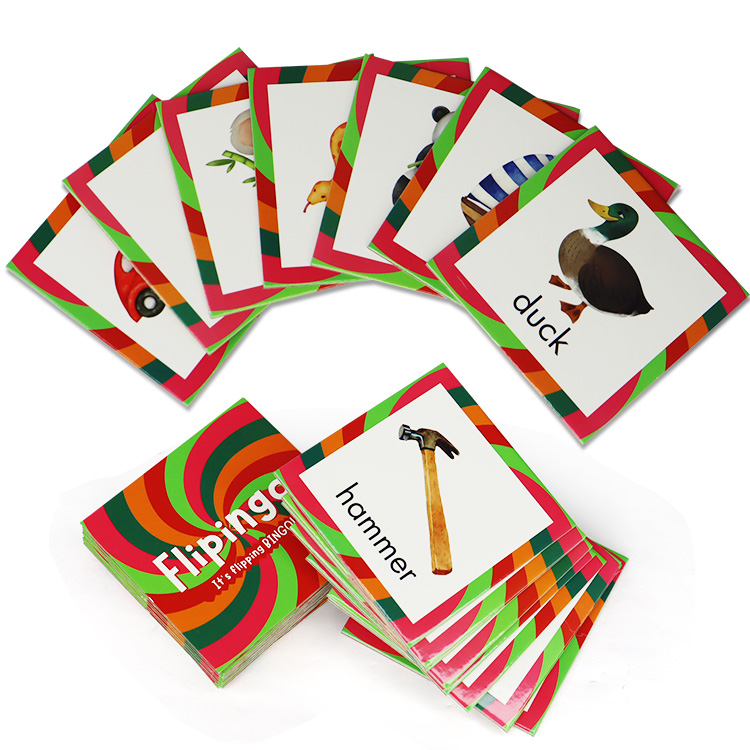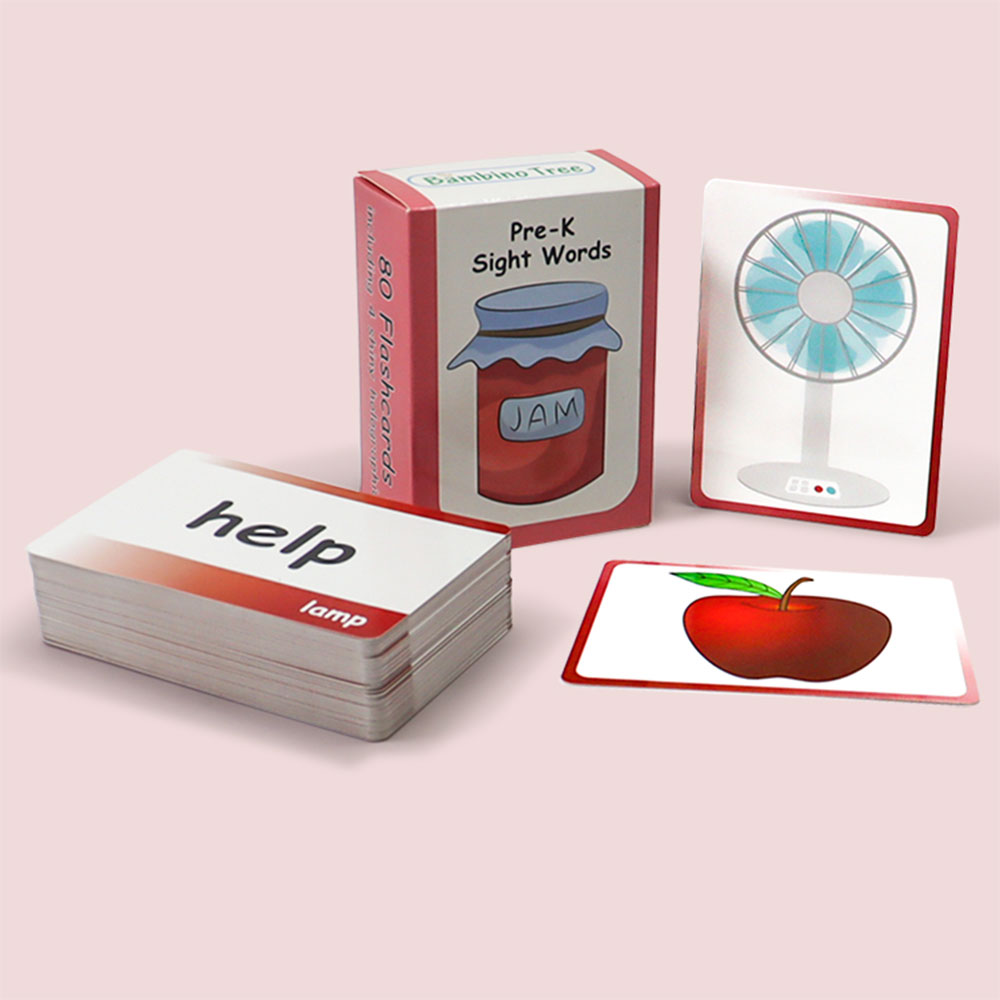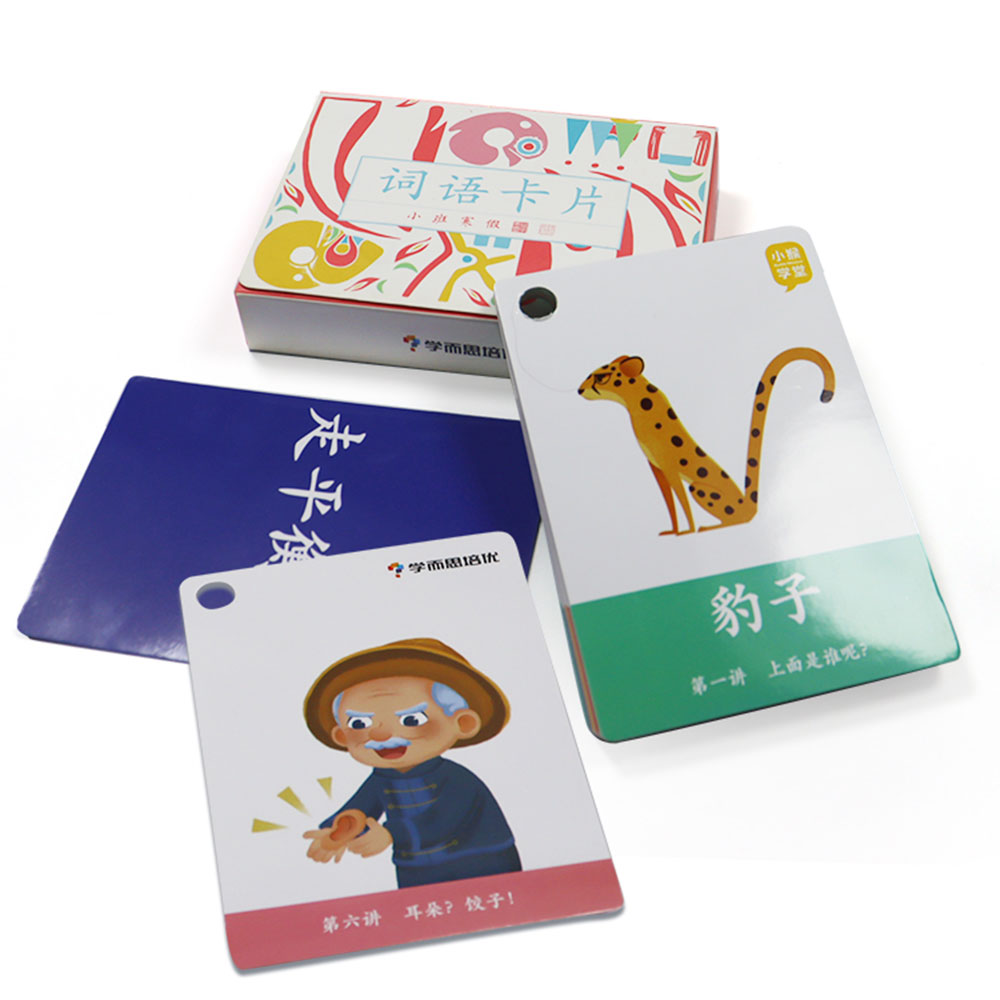Educational Card Printing: Transform Learning into an Engaging Game Experience
Introduction: Revolutionizing Education Through Play
In today's digital age, educators and parents constantly seek innovative ways to make learning more engaging. Educational card printing merges academic content with game mechanics, creating powerful tools that transform traditional studying into interactive experiences. This comprehensive guide explores how custom-printed educational cards can enhance memory retention, boost engagement, and make learning enjoyable for students of all ages.
- Section 1: The Power of Educational Cards
- 1.1 Why Game-Based Learning Works
- 1.2 Key Applications Across Age Groups
- Section 2: Designing Effective Educational Cards
- 2.1 Content Development Strategies
- 2.2 Game Mechanics Integration
- 2.3 Visual Design Best Practices
- Section 3: Printing & Production Considerations
- 3.1 Material Selection Guide
- 3.2 Special Features for Enhanced Learning
- 3.3 Production Tips
- Section 4: Successful Implementation Strategies
- 4.1 Classroom Integration Ideas
- 4.2 Home Learning Applications
- 4.3 Measuring Effectiveness
- Section 5: Case Studies & Success Stories
- 5.1 Elementary School Math Mastery
- 5.2 Medical School Anatomy Training
- 5.3 Corporate Training Adaptation
- Conclusion: The Future of Learning Through Play
Section 1: The Power of Educational Cards
1.1 Why Game-Based Learning Works
-
72% higher retention rates compared to passive learning (Journal of Educational Psychology)
-
Increased motivation through achievement-based rewards
-
Social learning opportunities via multiplayer formats
-
Adaptable difficulty levels for personalized education
1.2 Key Applications Across Age Groups
| Age Range | Effective Card Types | Learning Benefits |
|---|---|---|
| 3-6 years | Alphabet/Number cards | Early literacy & numeracy |
| 7-12 years | Math fact flashcards | Automatic recall mastery |
| 13-18 years | Science concept cards | Complex topic visualization |
| Adults | Language vocabulary cards | Accelerated second language acquisition |
Section 2: Designing Effective Educational Cards
2.1 Content Development Strategies
-
Chunking information into digestible card-sized portions
-
Color-coding systems for subject categorization
-
Mnemonic imagery to enhance memory connections
-
Progressive difficulty sequencing (Bloom's Taxonomy)
2.2 Game Mechanics Integration
-
Point systems for correct answers
-
Special "power-up" cards that unlock bonuses
-
Collection mechanics (complete the set challenges)
-
Head-to-head battle formats for classroom competitions
2.3 Visual Design Best Practices
-
Legible typography (minimum 14pt font for children)
-
High-contrast color schemes for readability
-
Durable materials resistant to frequent handling
-
Tactile elements (embossed letters, textured surfaces)
-

Section 3: Printing & Production Considerations
3.1 Material Selection Guide
Material Best For Advantages 300gsm cardstock Classroom sets Cost-effective, writable surface PVC plastic Early childhood Waterproof, chew-resistant Laminated paper Home use Dry-erase compatible Foam board Special needs Easy-to-hold, lightweight 3.2 Special Features for Enhanced Learning
-
QR code integration linking to video explanations
-
Augmented reality triggers for 3D visualizations
-
Glow-in-the-dark elements for space/science themes
-
Scratch-off answers for self-checking formats
3.3 Production Tips
-
Rounded corners for safety and durability
-
Matte finishes to reduce glare
-
Perforated edges for DIY separation
-
Custom tuck boxes for organization
Section 4: Successful Implementation Strategies
4.1 Classroom Integration Ideas
-
Warm-up activities using quick card drills
-
Station rotation centers with different card sets
-
Assessment tools with progress-tracking cards
-
Reward systems using collectible knowledge cards
4.2 Home Learning Applications
-
Family game night educational versions
-
Travel-friendly learning during commutes
-
Personalized learning decks tailored to child's needs
-
Progress tracking with achievement cards
4.3 Measuring Effectiveness
-
Pre/post-test comparisons
-
Engagement time metrics
-
Error pattern analysis through card sorting
-
Student feedback collection
-

Section 5: Case Studies & Success Stories
5.1 Elementary School Math Mastery
-
32% improvement in multiplication fact recall
-
90% student preference over worksheets
-
Reduced grading time for teachers
5.2 Medical School Anatomy Training
-
Complex systems visualization through layered cards
-
Peer teaching opportunities via card exchanges
-
Portable study solution for busy students
5.3 Corporate Training Adaptation
-
Product knowledge tournaments among sales teams
-
Compliance training through scenario cards
-
Onboarding acceleration for new hires
-

Conclusion: The Future of Learning Through Play
Educational card printing represents a powerful convergence of cognitive science and game design that:
-
Democratizes access to engaging learning tools
-
Bridges the gap between digital and physical learning
-
Customizes education to individual needs
-
Makes knowledge acquisition genuinely enjoyable
As printing technologies advance, opportunities expand for:
-
AI-generated personalized decks
-
Biodegradable smart materials
-
Integrated digital tracking systems
-
Cross-cultural educational exchanges
-
-
-
-

Your Legacy, Forged in Gold: The Enduring Power of Gold-Foiled Playing Cards in Corporate Branding

Affirmations in Action: How Affirmation Cards Provide Immediate Support for Life's Challenging Moments

2026 Trends in Custom Playing Cards: What Businesses Should Know

The Tarot Social: Transform Your Gatherings with Interactive Tarot Card Experiences

The Art of Tarot: Exploring the Aesthetics and Symbolism Behind Timeless Tarot Cards
After-sales support
Do you offer eco-friendly options?
Yes, we do offer eco-friendly materials and printing options. Please inquire about our sustainable options.
About customized services
What is the minimum order quantity?
We do not have a strict minimum order quantity. Since we are a custom offset printing company, we recommend a minimum order of 500 sets, as the material costs are the same, but the printing setup costs are higher.
However, if your order quantity is less than 300 sets, our sales team will usually work with customers to help customers find the most competitive options.
Do you provide design services?
Yes! Our in-house design team is here to assist you in bringing your vision to life. Whether you have a complete design or just an idea, we can help.
Do you offer samples?
Yes! We can provide samples of our card materials and finishes. Please contact us to request samples relevant to your project.
About logistics
How long does the production process take?
Production times can vary based on order complexity and volume. Typically, standard orders take 2-4 weeks. For urgent projects, we may offer expedited options—just ask!




WE’D LOVE TO 
FROM YOU
Please send us your inquiry details; our team will contact you ASAP.
20+ years of experience in custom playing cards, game cards, tarot cards, flashcards, and board games, as well as paper and paperboard box manufacturing.



bbilaser
sq_AL